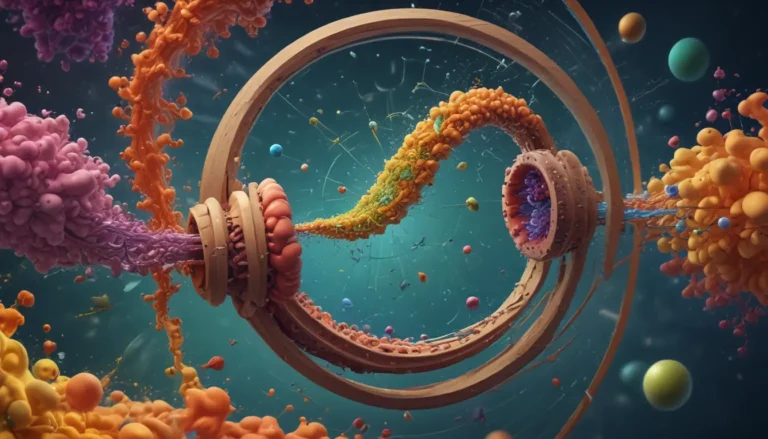A Note About Images: The images used in our articles are for illustration purposes only and may not exactly match the content. They are meant to engage readers, but the text should be relied upon for accurate information.
In the realm of chemistry, buffer capacity is a fundamental concept that holds the key to maintaining stable pH levels in various solutions. From biological systems to pharmaceuticals and chemistry labs, the ability of a buffer solution to resist changes in pH is crucial for ensuring optimal functionality and reliability. In this comprehensive guide, we will explore the enigmatic world of buffer capacity and uncover 13 essential facts that highlight its significance. Whether you’re a seasoned chemist or a curious student, get ready to expand your knowledge and delve into the fascinating realm of buffer capacity!
Exploring the Basics of Buffer Capacity
Buffer capacity is defined as the ability of a buffer solution to resist changes in its pH when an acid or base is added. It serves as a measure of the buffer’s effectiveness in maintaining stability and preventing drastic shifts in pH levels. Understanding buffer capacity is essential for ensuring the reliability of various biological systems, chemical reactions, and pharmaceutical formulations.
Delving into the Henderson-Hasselbalch Equation
At the heart of buffer capacity lies the Henderson-Hasselbalch equation, a powerful mathematical expression that calculates the pH of a buffer solution. By considering factors such as the acid dissociation constant (${Ka}$) and the ratio of the concentration of the conjugate base to the concentration of the acid (${A- / HA}$), chemists can determine the pH range in which a buffer solution is most effective.
Unveiling the Buffer Range and Its Significance
Every buffer solution operates within a specific pH range determined by the pKa value of the acid-base pair comprising the buffer. Selecting a buffer with the appropriate pKa is essential for maintaining the desired pH range and ensuring optimal stability in various applications.
The Role of Buffers in Biological Systems and Pharmaceuticals
Buffer capacity plays a vital role in biological systems, where precise pH control is necessary for optimal functioning. For example, blood maintains a stable pH due to the presence of buffers like carbonic acid and bicarbonate ions. In the pharmaceutical industry, buffer solutions are instrumental in stabilizing the pH of medications, ensuring their efficacy and safety.
Calculating Buffer Capacity for Precise pH Control
The buffer capacity can be calculated by evaluating the change in pH resulting from the addition of a strong acid or base to the buffer solution. A higher buffer capacity indicates greater resistance to pH fluctuations, highlighting the efficacy of the buffer in maintaining stability.
Understanding the Impact of Concentration and Temperature
Buffer capacity is directly proportional to the concentration of the buffer components. Higher concentrations of the acid and its conjugate base result in increased buffer capacity, providing greater pH stability. Additionally, temperature influences buffer capacity, with higher temperatures typically leading to decreased buffer effectiveness.
Optimal pH for Enzymatic Activity and Buffer Solutions in Chemistry Labs
Buffer solutions play a crucial role in maintaining the ideal pH for enzymatic activity, ensuring that enzymes can function optimally. In chemistry labs, buffer solutions are indispensable for creating a controlled environment that allows for accurate and reproducible results in various experiments.
Exploring Buffer Overload and pH Titration Curves
While buffers excel at maintaining pH stability, exceeding the buffer capacity can lead to significant changes in pH that diminish the buffer’s effectiveness. Buffer solutions contribute to distinct pH titration curves by exhibiting minimal changes in pH within the buffer region, highlighting their ability to resist sudden fluctuations.
Appreciating Buffer Capacity Variations and Their Importance
Buffer capacity varies with the nature of the buffer components and the specific acid-base equilibrium involved. Different buffer combinations exhibit diverse buffer capacity values, underscoring the importance of selecting the right buffers for specific applications.
Embracing the Power of Buffers: Unlocking Their Mysteries
Having delved into the 13 enigmatic facts about buffer capacity, you now possess a deeper understanding of its crucial role in maintaining pH stability. Whether you’re exploring biological systems, conducting chemistry experiments, or venturing into pharmaceutical research, buffer capacity remains a cornerstone of ensuring accurate and controlled conditions. Embrace the power of buffers and unlock the mysteries they hold in the realm of chemistry.
Conclusion: Harnessing the Power of Buffer Capacity
Buffer capacity is not just a concept in chemistry; it’s a gateway to maintaining pH stability in a variety of applications. By understanding the factors that influence buffer capacity and its role in maintaining optimal pH levels, scientists can leverage this knowledge to drive advancements in fields such as medicine, environmental science, and biochemistry. With buffer solutions at their disposal, researchers can create reliable systems that ensure the efficacy and safety of critical processes and products.
FAQs: Your Buffer Capacity Questions Answered
- Q: What is buffer capacity?
-
A: Buffer capacity refers to the ability of a buffer solution to resist changes in pH when an acid or a base is added.
-
Q: How is buffer capacity determined?
-
A: Buffer capacity is determined by the concentration of the buffer components and their ability to undergo reversible reactions with H+ ions.
-
Q: How does buffer capacity vary with pH?
-
A: Buffer capacity is not constant but depends on the pH of the solution, typically being highest at the buffer’s optimal pH range.
-
Q: What is the optimal pH range for maximum buffer capacity?
-
A: The optimal pH range for maximum buffer capacity is usually within one unit of the buffer’s pKa value.
-
Q: How does buffer capacity impact biological systems?
-
A: Buffer capacity is crucial in biological systems as it helps maintain the pH balance necessary for the proper functioning of enzymes and physiological processes.
-
Q: Can buffer capacity be increased?
- A: Buffer capacity can be increased by adjusting the relative concentrations of the buffer components and choosing buffers with appropriate pKa values.
As you navigate the intricate world of buffer capacity, remember that each discovery brings you closer to unlocking the mysteries of pH stability. Embrace the knowledge you’ve gained and continue to explore the wonders of chemistry with a newfound appreciation for the essential role of buffer solutions.






